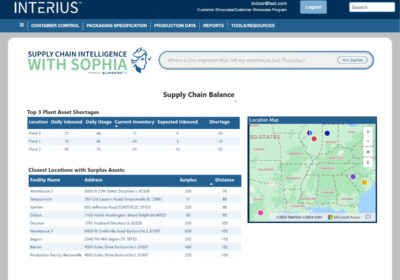~ Strategies for enhancing connectivity in rural UK ~
In an increasingly digital world, access to reliable internet connectivity is no longer a luxury but a necessity. However, while urban areas often enjoy high-speed broadband, rural communities in the UK are frequently left underserved, grappling with sluggish connections or even complete lack of access. Addressing this digital divide is crucial for ensuring equitable opportunities and fostering economic development across the nation. Here, Marcin Bala, CEO of telecommunication networks specialist Salumanus, explores strategies to enhance connectivity in rural UK.
Rural areas face unique challenges when it comes to connectivity. Sparse population densities and difficult terrain make traditional broadband infrastructure deployment costly and logistically challenging. As a result, many rural communities are left behind in the digital revolution, impeding their ability to access online education, telemedicine, e-commerce and other essential services.
In the UK, Project Gigabit was created, involving a £5 billion investment from the government to deliver lightning-fast, reliable broadband to every corner of the country. Since its rollout in 2019, 76 per cent of UK premises can access a gigabit-capable connection, according to Rural Services Network. On top of this, more than 50 per cent of UK premises are now covered by a full-fibre network, up from just 22 per cent in April 2021. However, the progress in rural areas of the UK is slow with just 40 per cent of rural premises now gigabit-capable, compared to 80 per cent in urban areas.
Investment in infrastructure
A fundamental step in bridging the rural-urban connectivity gap is investing in infrastructure tailored to rural landscapes. This includes expanding the reach of fixed broadband networks, investing in satellite and wireless technologies, and leveraging emerging solutions such as TV white space, which is unused spectrum in the television frequency bands, to deliver internet access to remote areas.
Similarly, wireless technologies, including 5G and fixed wireless access (FWA), present an avenue for improving connectivity in rural areas. 5G networks offer high-speed internet access without the need for physical cables, making them suitable for rural deployment. FWA uses wireless signals to deliver broadband connectivity to homes and businesses, bypassing the need for traditional wired connections. Investing in the deployment and optimisation of 5G and FWA infrastructure can help extend broadband coverage to rural communities.
Public-private partnerships
Collaboration between government entities, internet service providers (ISPs), and local communities is also essential for successful connectivity initiatives. Public-private partnerships can leverage resources, expertise and funding to extend broadband infrastructure to rural areas in a cost-effective manner.
Furthermore, community-led initiatives empower residents to take ownership of their connectivity challenges. Projects such as community broadband schemes, where locals pool resources to build and maintain their networks, have proven successful in delivering high-speed internet to underserved areas.
Affordability and digital literacy
Improving connectivity in rural areas is not solely about infrastructure, it’s also about ensuring affordability and promoting digital literacy. Government subsidies and incentives can help make broadband services more affordable for rural residents, ensuring that connectivity is accessible to all socioeconomic groups.
Additionally, investing in digital skills training programs can empower rural communities to fully leverage the benefits of the internet. By equipping residents with the necessary digital literacy skills, they can participate more actively in the digital economy, access online education and healthcare services, and connect with the global community.
Bridging the digital divide in rural UK requires a multi-faceted approach that combines infrastructure investment, public-private partnerships, utilisation of emerging technologies and initiatives to promote affordability and digital literacy. By working together, stakeholders can ensure that no community is left behind in the digital age, fostering economic growth, social inclusion and innovation across the nation.
At Salumanus, we work closely with governments and private stakeholders to ensure the deployment of high speed connectivity in every corner of the world. To find out more about our solutions for optimised connectivity, visit www.salumanus.com.







